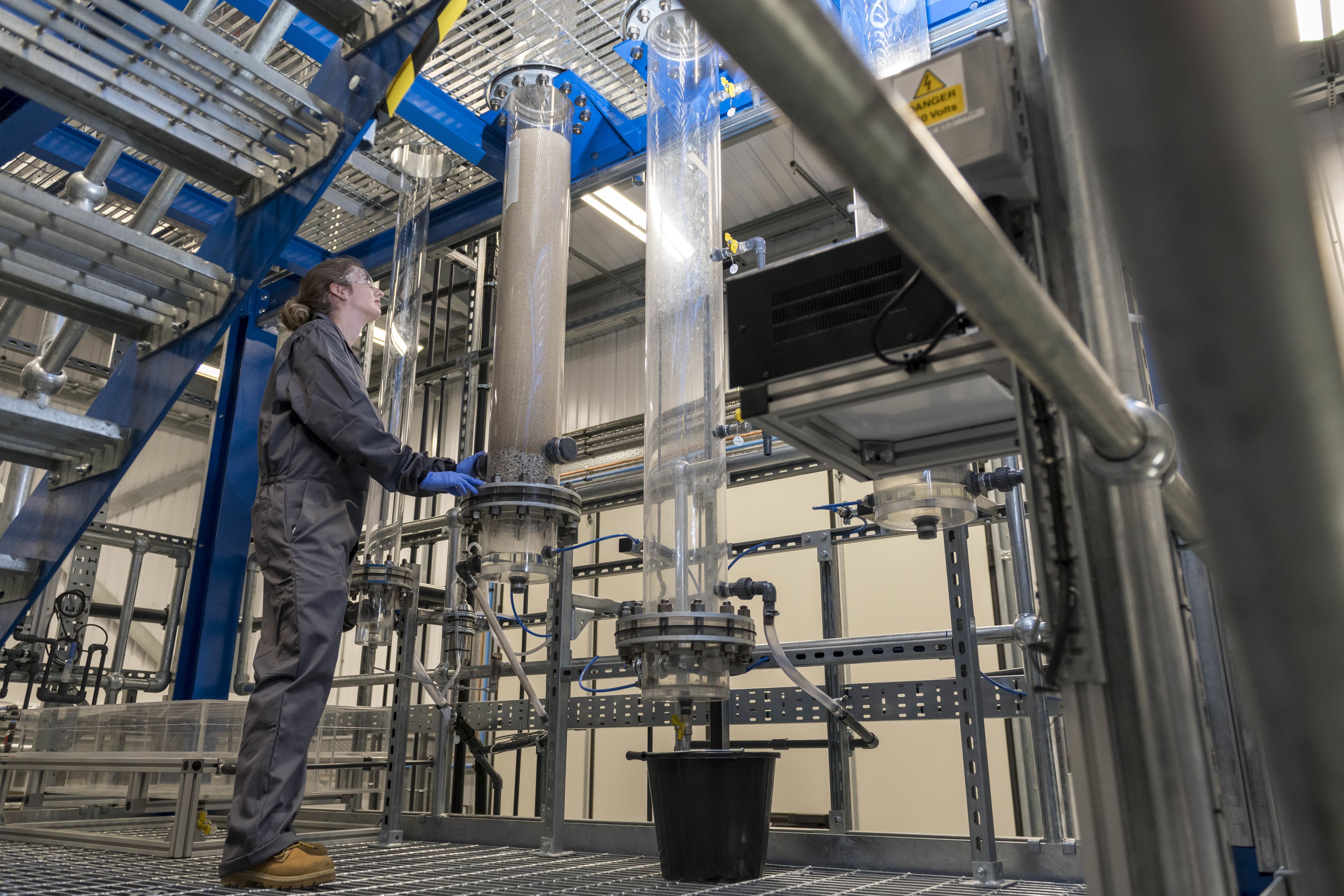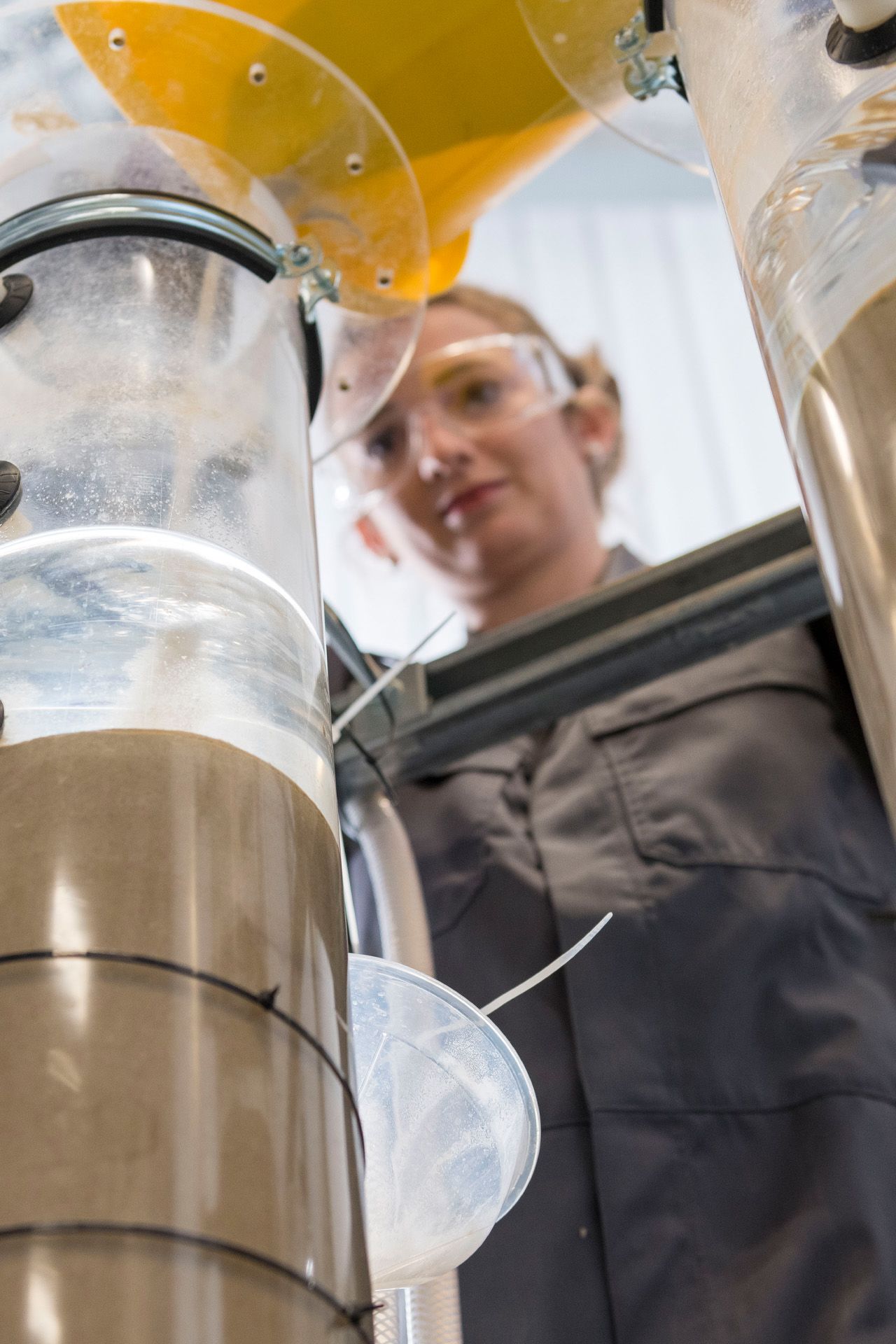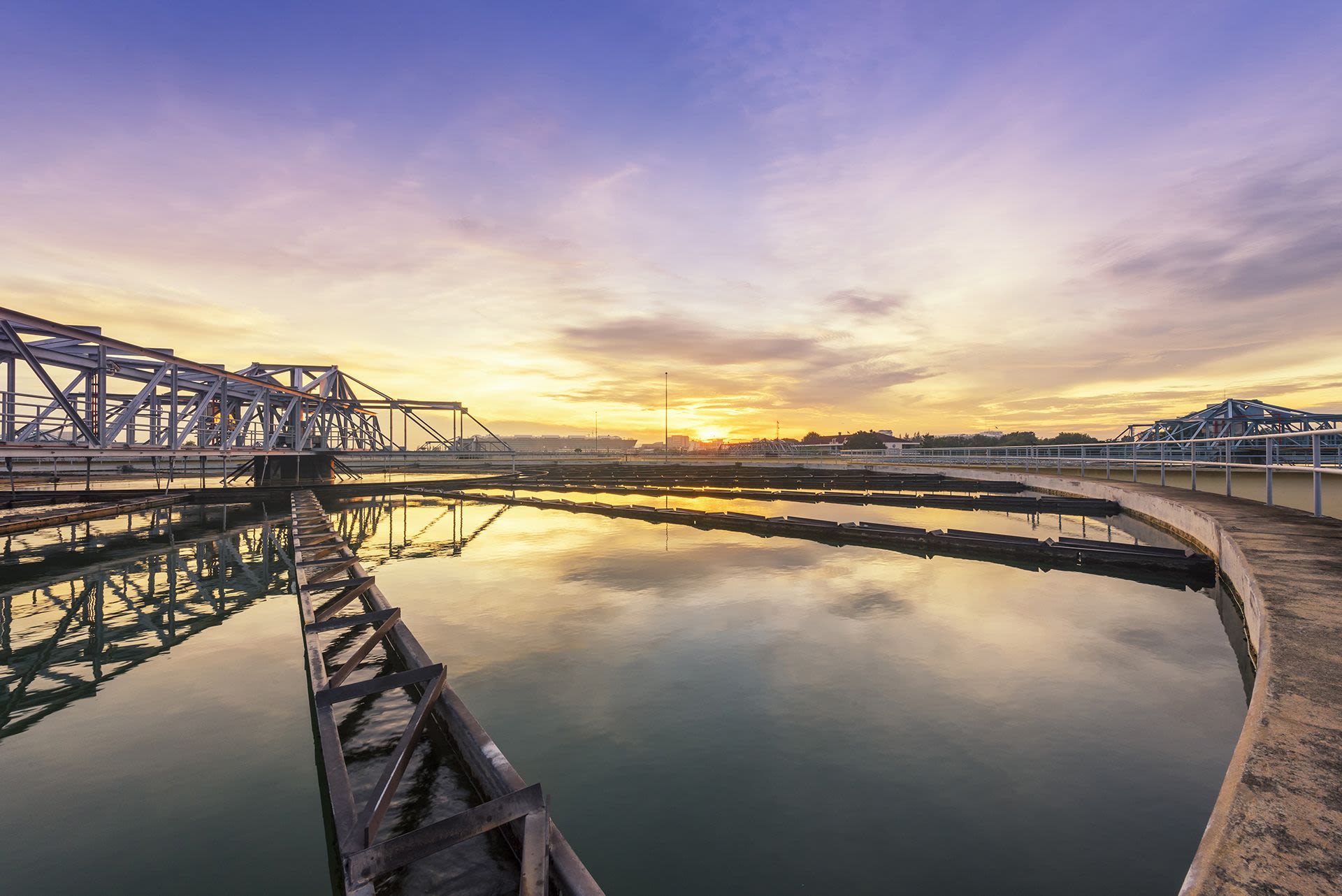Improving drinking water quality and opening up new revenue streams for the water sector
- Cranfield’s work established a new understanding of dissolved gas separation, leading to a new technological solution for the water industry
- Cranfield research has led to improved drinking water quality
- The research was central to the creation of a new standard, ISO30500: Non-sewered sanitation systems

Cranfield research has led to improved drinking water quality, as well as new revenue for water treatment plants from the recovery of gases with commercial value.
This model of best practice for the water industry was made possible via a better understanding of liquid-to-gas mass transfer: how dissolved gases can be separated using a minimum of energy, and the recovered gases keep their value as products.
Scottish Water has been the first operation to deploy the technology. The research was also used to inform ISO 30500 for non-sewered sanitation systems, adopted by 18 countries.

Separating solutions
In its bid to improve energy recovery in its processes, the water industry has adopted the use of liquid-to-gas mass transfer technologies, well-established in other industries such as healthcare and food and beverages.
Water plants face more challenges: the water quality involved, and the opportunity to recover and convert separated gases — like methane and water vapour into products. There is also the question of the energy needed for the transfer process, given the volume of municipal water flows.
Cranfield’s work, begun in 2008, has established a new understanding of dissolved gas separation, leading to a new technological solution to separation, purification and transformation of dissolved gases for the water industry.
The conventional approach by industry has involved using an excess of ‘sweep gas’ to encourage migration of gases from the liquid. But this means extra energy use and doesn’t allow for the gases to be recovered in a form which can be re-used.
The research demonstrated the viability of a low-energy, low-cost approach — without the reliance on such high concentrations of sweep gas — and the ability to recover useful resources, as products in themselves or for energy generation.

The science behind this work was developed and applied to the question of how clean water could be produced from toilet wastewater.
This led to other new liquid to gas mass transfer technologies, including the design of the ‘nanomembrane toilet’, a piece of household kit that can be used to recover and re-use water in regions without water infrastructure and shortages of water supplies.

The benefits so far
Introducing the new technology has led to a series of benefits to the first adopter, Scottish Water:
• the company has been the first to deploy liquid-to-gas mass transfer technology to remove THMs from drinking water. Reducing levels of THMs is a key part of the regulating body’s performance assessment (given the suggested link between chronic exposure to elevated levels of THMs and carcinogenic effects);
• £4 million has been invested by Scottish Water: deploying the approach into 17 water treatment works in rural catchment areas in 2013; and 24 more in 2019;
• as a result, there has been an ongoing improvement in drinking water quality for householders across Scotland.

The work has enabled the development of the nanomembrane toilet, eradicating unhygienic practices which kill nearly 500,000 children under five each year.
The new market has an estimated value of more than $8.4 billion. The membrane technology has been licensed to a major sanitaryware manufacturer in China.

Cranfield expertise was central to the creation of a new standard, ISO30500: Non-sewered sanitation systems, published in October 2018. This sets out general safety and performance requirements for the product design and performance testing of prefabricated integrated treatment units that are not attached to a network sewer or drainage system. The Standard has since been adopted nationally by more than 18 countries: North America (US, Canada), Europe (UK, France), Africa (Algeria, South Africa, Zimbabwe etc) and Asia (Bangladesh).

Water
The Water theme at Cranfield University is home to the internationally recognised centre of excellence Cranfield Water Science Institute. The centre offers postgraduate taught and research degrees as well as short courses on campus or in-company. If you have ambitions, research needs, or training requirements in the areas of water we’d be delighted to hear from you.

